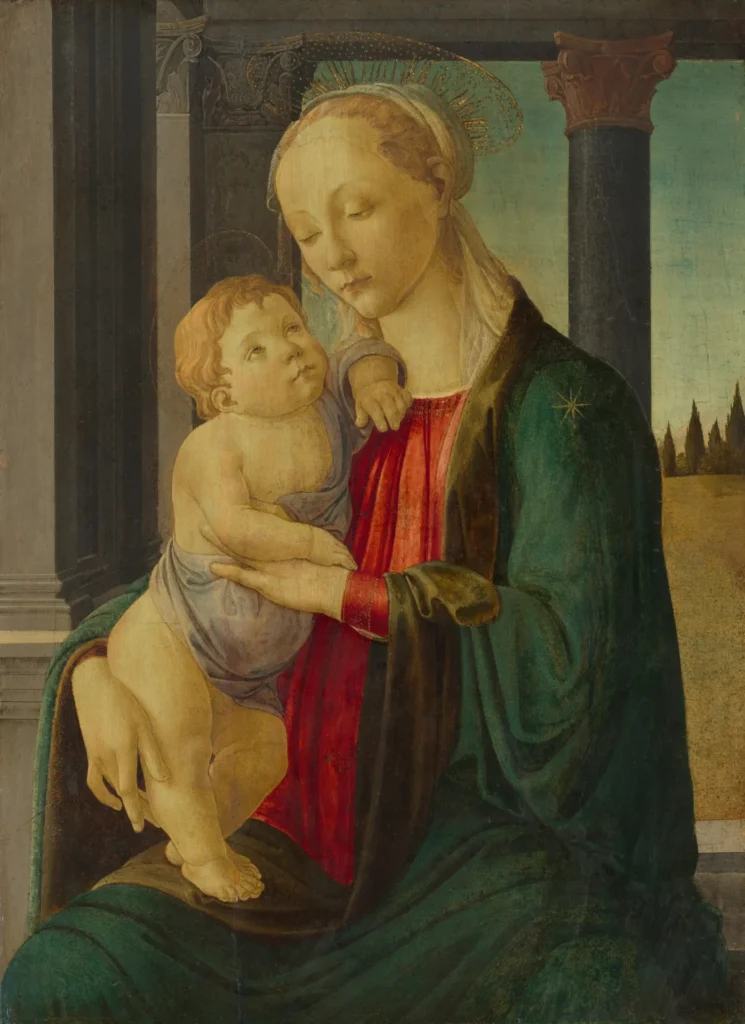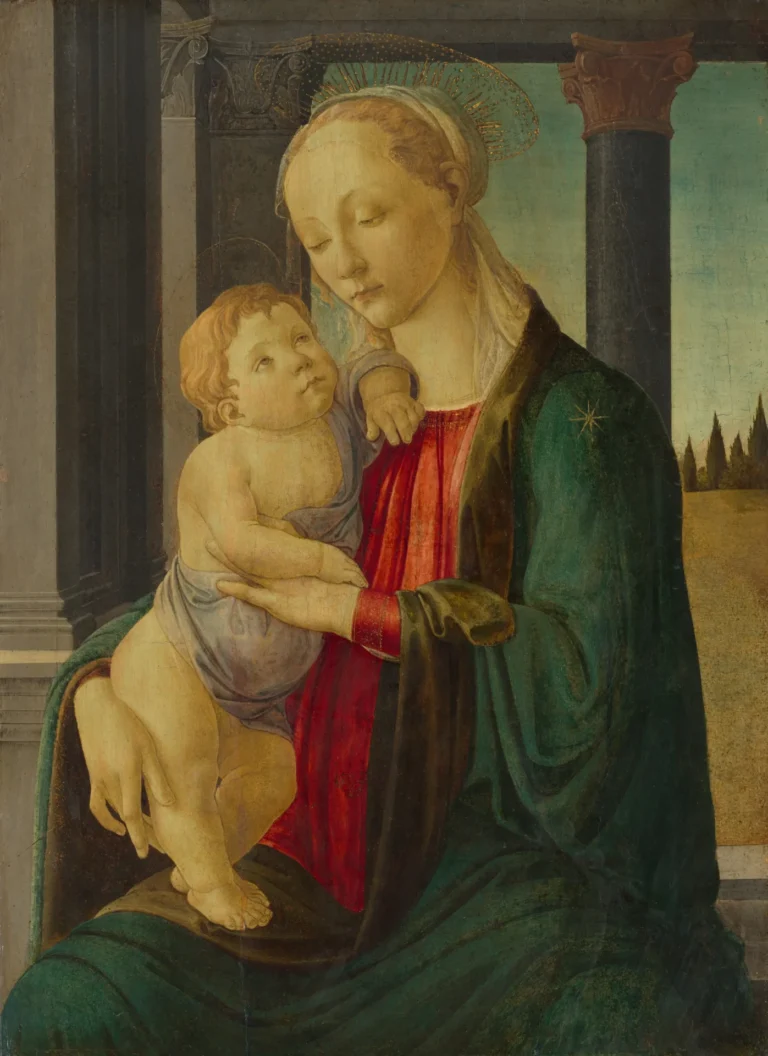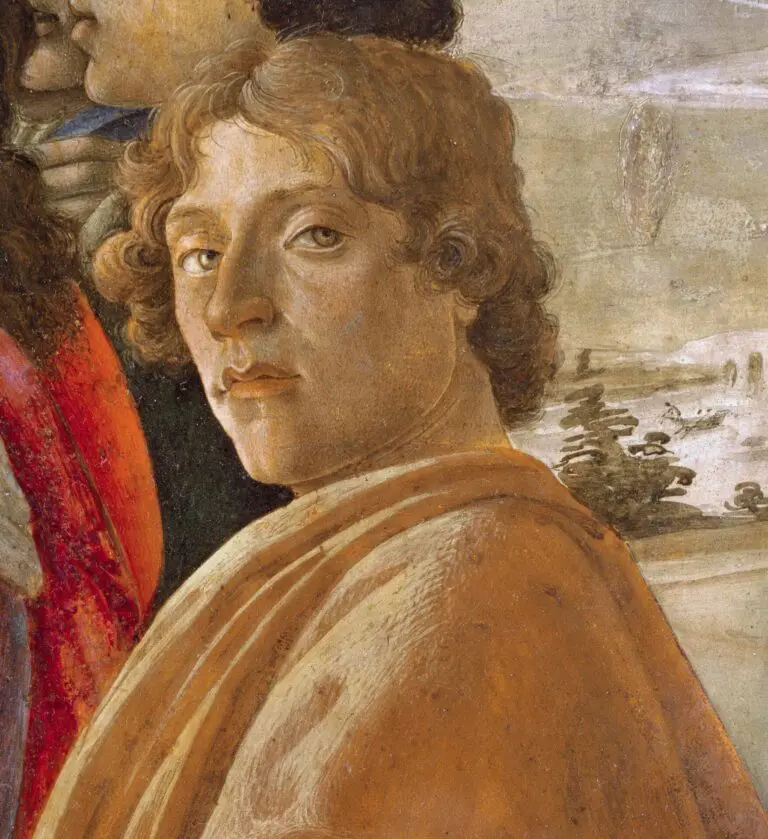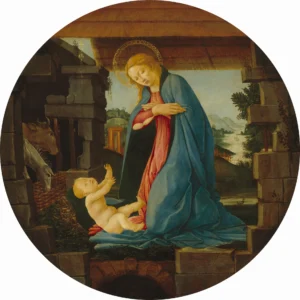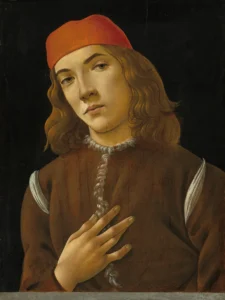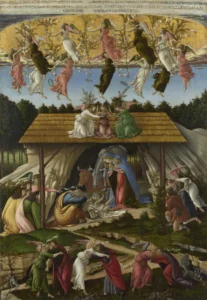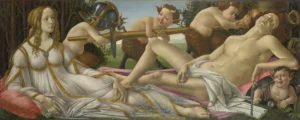Madonna and Child (1470)
Painted circa 1470, Botticelli's Madonna and Child epitomizes the Early Renaissance style through its elegant representation of the Virgin Mary cradling the Christ Child. Known for their calm and harmonious compositions, these artworks were popular in Florence’s domestic settings. The painting often includes symbolic elements, such as angels or references to the Eucharist, enhancing its spiritual significance.
Circa 1470
About the Artwork
The Madonna and Child was crafted during a flourishing period for Botticelli when devotional works were highly sought after due to the cultural and religious climate in Florence. This artwork reflects his mastery in conveying deep emotion and divine beauty. Notably, variations of this theme may incorporate additional figures, enriching its narrative and symbolism. Over time, the painting has passed through notable ownership, including the Corsini family, before finding a permanent residence at the National Gallery of Art, highlighting its esteemed historical importance.
Did You Know
Liked what you see? Add it to your collection.
Enjoyed reading? Share it.
... continued
Date and Style
The painting is dated to around 1470, a period when Botticelli was actively producing devotional images on a domestic scale, which were in high demand in Florence during the late 1400s.
Location and Dimensions
One version of Madonna and Child by Botticelli is housed at the Louvre in Paris, France. This painting measures 73 x 49 cm.
Composition and Symbolism
The composition typically features the Virgin Mary holding the Christ Child. In some versions, additional figures such as angels or the young St. John the Baptist may be included. For example, the 'Virgin and Child with an Angel' (circa 1470-1474) includes an angel and symbols like grapes and wheat, which allude to the Eucharist and Christ's sacrifice.
Provenance
Another version of Madonna and Child is part of the National Gallery of Art in Washington, D.C. This painting has a detailed provenance, having been owned by various members of the Corsini family before being purchased by the A.W. Mellon Educational and Charitable Trust and gifted to the National Gallery of Art in 1937.
Artistic Style and Attribution
Botticelli's works from this period are characterized by their calm and pretty depiction of the subjects, often with a serene and harmonious atmosphere. However, some attributions have been debated; for instance, the National Gallery of Art's version has been described as 'partly by Botticelli’s own hand,' with some elements possibly drawn by another artist like Lippi.




